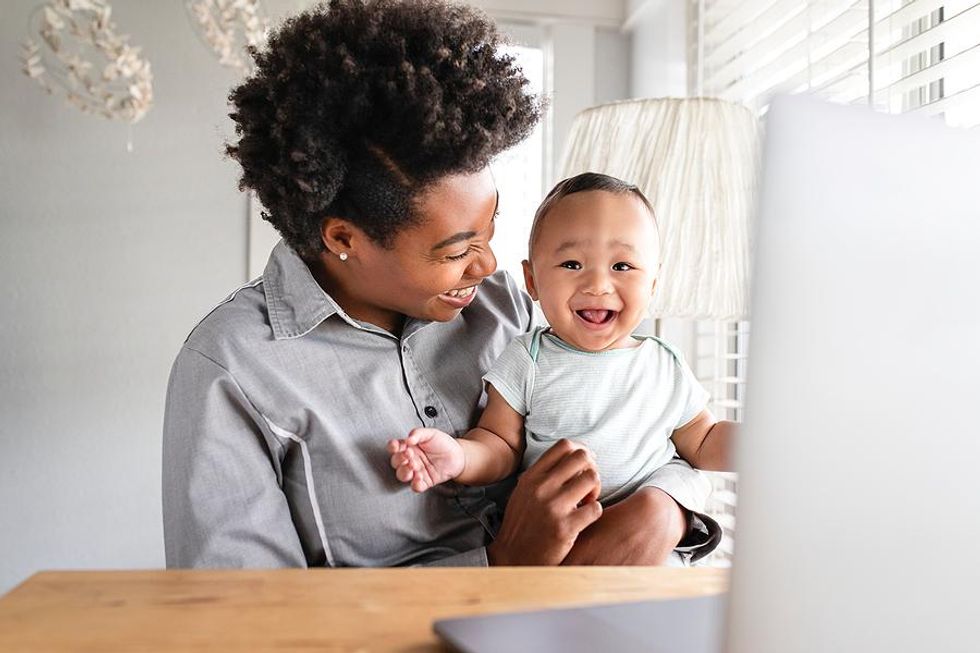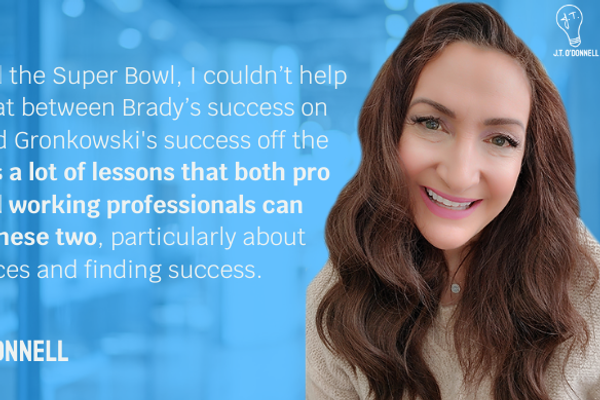Looking for more work-life balance and freedom in your career? Having a flexible work schedule is becoming one of the most sought-after job perks. According to a survey conducted by FlexJobs, 97% of respondents said a job with flexibility would have a positive impact on their overall quality of life.
Prioritizing your health, spending more time with loved ones, reducing stress—the benefits of job flexibility are undeniable.
Here are a few reasons why a flexible work schedule might change your life:
1. It Gives You More Time to Pursue Your Passions

Bigstock
Erik Freeman, a benefits advisor representing Aflac, strongly believes today's employees work far more hours than those of past generations. However, he lives by a different credo. "I work to live, not live to work," he explains. "With Aflac, I create my own schedule around my life goals, like raising a family and producing rock albums with my band."
Luis Correa, who is also a benefits advisor representing Aflac, says that working as an independent agent allows him to thrive both at work and outside of work. "It has provided me with the flexibility and financial resources to create my own schedule in a way that allows me to pursue my passions and still be fully committed to servicing my clients," he states.
Having time to nurture your hobbies, creative outlets, or personal goals can boost your overall sense of fulfillment. A rigid 9-to-5 often hinders this.
2. It Improves Your Physical and Mental Health

Bigstock
Freeman believes having time to focus on mental health, wellness, and hobbies is huge, and his opinion is shared by many others. According to the FlexJobs survey, 79% of respondents said a flexible work schedule would make them healthier, and 87% said it would lower their stress levels.
Freeman, who once worked long hours in retail for another company, says he often went home completely exhausted from helping so many people and meeting high expectations. As a result of stress, he ended up gaining weight, losing energy, and developing harmful personal habits to cope with the stress. "If companies really want healthy employees that create efficient results, they need to take a big look at how they're helping their employees stay up with their life goals," he says.
While some may think flexible work is simply a perk, it's clearly much more than that. It can be a powerful tool for reducing burnout, improving sleep, and prioritizing well-being.
3. It Helps You Reconnect with Family and Friends

Bigstock
For Heather Siems, a district sales coordinator representing Aflac, having the flexibility to spend ample amounts of time with her family while still working full time was a huge selling point when she accepted the opportunity with Aflac. "I knew that I wanted the flexibility as I started a family, so I could go to dance practices and soccer games but still work full time," she says.
Having a flexible schedule as well as the ability to work from home has allowed Siems to spend more time with her family and watch her children grow.
A flexible schedule creates space for what really matters: shared moments, milestones, and memories with loved ones.
4. It Lets You Travel More and Live Life on Your Terms

Bigstock
Do you wish you had more time to travel? You're not alone. More than half (58%) of FlexJobs' survey participants said they want a flexible work schedule for that reason.
For Shyla Syverson, an Aflac benefits advisor from Montana, being able to take vacations and trips on her own time is a huge bonus. "I started working as a benefits advisor with Aflac for a variety of reasons, and one of those was for the flexibility that being an entrepreneur can offer," she says. "As a result of really hard work and taking care of my policyholders and clients, I have been able to travel more than I ever imagined possible. I can enjoy the great outdoors of Montana and also travel the world."
Remote work options and flexible schedules are unlocking new freedom to explore and recharge, without sacrificing career growth.
5. It Boosts Your Productivity and Job Performance

Bigstock
Working in an office atmosphere 40 hours a week may affect your productivity. Between interruptions from co-workers, a loud atmosphere, and other distractions, it can be hard to focus on your projects. Studies show that having a flexible work schedule can actually make you a more productive employee. Having the ability to work whenever and wherever you want can help you to complete your tasks more efficiently.
Syverson says she believes workplace productivity is enhanced by a healthy time-off policy. "When an employee knows they can take time off without there being backlash or feelings of guilt, they will want to work hard for the company," she explains.
A strict schedule doesn't usually translate to increased productivity. Giving employees the autonomy to manage their time does. And who wouldn't want better performance, stronger focus, and higher job satisfaction?
6. It Increases Job Satisfaction and Career Longevity

Bigstock
A recent study conducted by Leadership IQ revealed that people who work from home are 87% more likely to "love" their job than people who do not.
Being able to spend time with your family, having the ability to travel, and being able to pursue your passions outside of work all contribute to a solid work-life balance. This makes sense because when you are happy outside of work and productive when you are working, you are generally more satisfied.
When employees feel trusted and empowered, they’re more likely to stay engaged and loyal to their career path long term.
Do you crave more freedom, health, and happiness in your career?
These are just a few of the benefits stemming from a flexible work schedule—there are many more. Aflac offers flexible, independent contractor (or agent) roles that can give you the power to do the things you want to do. If you are interested in pursuing a career that allows flexibility, check out opportunities with Aflac.
Need help finding a job with a flexible work schedule?
Join Work It DAILY today.
This post is sponsored by Aflac. Aflac agents are independent agents and are not employees of Aflac. Aflac herein means American Family Life Assurance Company of Columbus and American Family Life Assurance Company of New York. This post was originally published at an earlier date.




